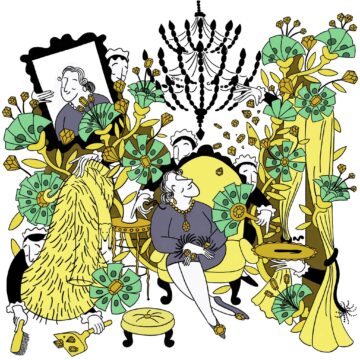Molly Young in The New York Times:
 “Class consciousness takes a vacation while we’re in the thrall of this book,” Barbara Grizzuti Harrison wrote in the Book Review in 1985, in her evaluation of the heiress Gloria Vanderbilt’s memoir “Once Upon a Time.” To be clear, Harrison was referring to the class consciousness of the reader, not the author. Vanderbilt demonstrates perfect awareness throughout her book that most young children don’t play with emerald tiaras and alligator jewel boxes lined in chestnut satin, or rely on the services of multiple butlers, or lose count of their own houses. Harrison’s point was that Vanderbilt’s talent with a pen — and perspective on her own economic altitude — allowed consumers of her tale to suspend their envy and engage with the reality of growing up in opulent neglect.
“Class consciousness takes a vacation while we’re in the thrall of this book,” Barbara Grizzuti Harrison wrote in the Book Review in 1985, in her evaluation of the heiress Gloria Vanderbilt’s memoir “Once Upon a Time.” To be clear, Harrison was referring to the class consciousness of the reader, not the author. Vanderbilt demonstrates perfect awareness throughout her book that most young children don’t play with emerald tiaras and alligator jewel boxes lined in chestnut satin, or rely on the services of multiple butlers, or lose count of their own houses. Harrison’s point was that Vanderbilt’s talent with a pen — and perspective on her own economic altitude — allowed consumers of her tale to suspend their envy and engage with the reality of growing up in opulent neglect.
Memoirs by the rich have always been major publishing events. Readers love to prowl wide-eyed through gilded corridors, and I am no exception. A cherished portion of my shelf is devoted to the self-accounts of Rothschilds, Vanderbilts, Rockefellers, Pells, Guggenheims and other names familiar from banks, art museums and city centers. It wasn’t until trying to get through this year’s big contributions to the genre — Prince Harry’s “Spare” and Paris Hilton’s “Paris: The Memoir” — that I noticed two curious facts about my collection. One, the shelf contained nothing published after 2020. Two, and more crucially, it featured no authors born after 1937, which suggests that 1937 was the last year rich people were manufactured to my precise specifications.
More here.
